Once considered the epitome of automobile fashion and luxury, whitewall tires provide a classic finish to vehicles that is reminiscent of era’s past. And although you can’t get whitewalls as an added accessory from the factory anymore these days, the style has remained a staple in certain car culture circles like hot rods, VW’s and classics.
If you’ve ever owned a car with a set of whitewall tires, you know they’re definitely more work to keep clean than the standard black wall tires used today. Jay’s got a few cars in his collection that sport the whitewall look, and we’re always working to keep them looking their best.
In today’s blog post, we’ll cover some of the basic care tips we use at Jay’s garage, and hopefully they'll help you keep your whitewall tires looking their whitest.
But first, a little history on whitewall tires. What are they and how did they even come to exist?
To start, rubber tires were originally entirely white in color. Rubber in its natural form does not age or wear well. Because of this fact, tire manufacturers began blending specific materials with the natural rubber to achieve different characteristics. One of those materials was zinc oxide. The zinc oxide helped with traction of the finished tire, but it was also a contributing factor that caused the tire to be completely white, tread included. By today’s standards, an all-white tire might look funny, but in their day they were the height of luxury. See the picture below:
Black tires didn’t emerge until manufacturers began blending carbon black into their rubber as a reinforcing filler. The carbon black increased the strength & durability of the rubber, but more importantly, it helped conduct heat away from specific areas of the tire. In an attempt to increase the lifespan as well as limit the amount of thermal damage endured by the tires, manufacturers began blending carbon black into the rubber and using it as the treaded surface of the tire, while leaving the side walls white. In the early 1900’s, you could buy tires with black tread and a white sidewall. This signaled that you had the best set of tires money could buy, and thus the trend was born. By the 1930’s, you could get whitewall tires on just about any car made, and customers flocked to the fashion statement.
In the early 1900’s, you could buy tires with black tread and a white sidewall. This signaled that you had the best set of tires money could buy, and thus the trend was born. By the 1930’s, you could get whitewall tires on just about any car made, and customers flocked to the fashion statement.
The biggest downside to installing a set of whitewalls on your car is simply keeping them clean. They scuff easily, show even the slightest amount of dirt, and god forbid you accidentally run up onto a curb (who remembers curb feelers?). And even if you don’t drive the car, the whitewalls want to turn yellow and brown just from being exposed to the elements. Needless to say, they’re a little high maintenance, especially when compared to their black wall counterparts. Here’s some of the tips & tricks we use to keep Jay’s whitewalls looking their best year-round.
 You want to steer clear of any harsh household cleaning products, or products that may contain alcohol or chlorine bleach. These may work in the short term, but they will also dry out the surface of the tire and cause premature wear.
You want to steer clear of any harsh household cleaning products, or products that may contain alcohol or chlorine bleach. These may work in the short term, but they will also dry out the surface of the tire and cause premature wear.Pro tip: for really stubborn yellow or brown staining, you can also use a scrub pad, or even sand paper to slowly and gently remove the yellowed layer until the white layer below shows through.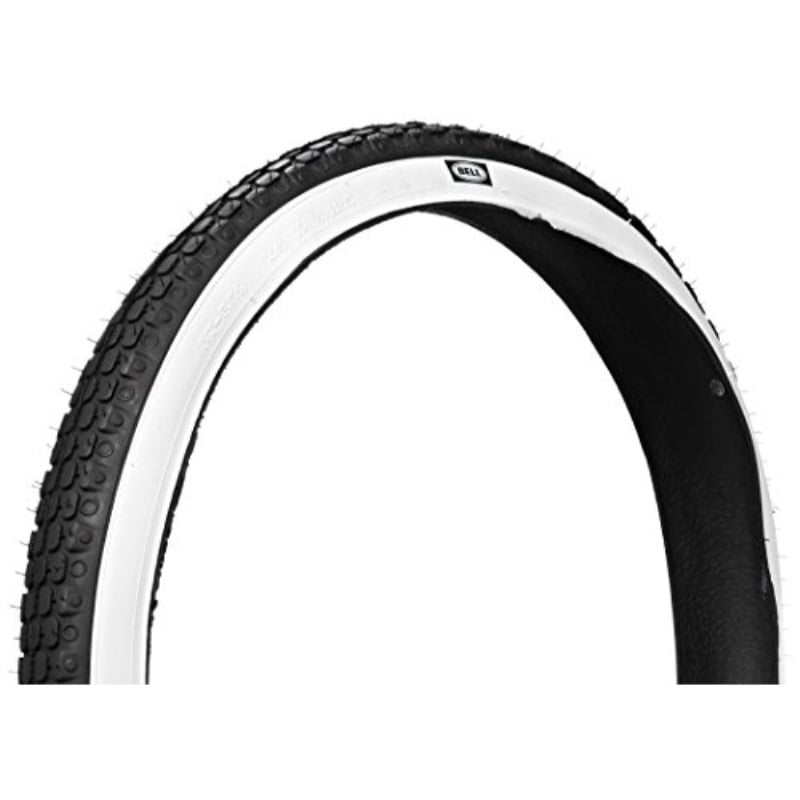
Frequent and routine cleaning will help keep your whitewalls looking their best. You can also use a quality tire dressing to help combat the harmful effects of the sun. Our Tire & Trim Care leaves behind a nice satin sheen, while shielding against harmful UV rays. It’s our go-to dressing when caring for Jay’s collection.
Hopefully these tips will help you the next time you're faced with the task of cleaning whitewall tires. If you have any questions or suggestions, leave them in the comments below. If you'd like to see us cover other popular detailing topics, drop us a line at [email protected].
From Kustomrama
Jump to: navigation, search
After purchasing your great-looking whitewall tires, you definitely need to maintain their good looks. Because let’s face it, the biggest downside with a set of whitewall tires is keeping them clean. Your whitewall tires should be cleaned and cared for, just as much as the rest of your car if not more.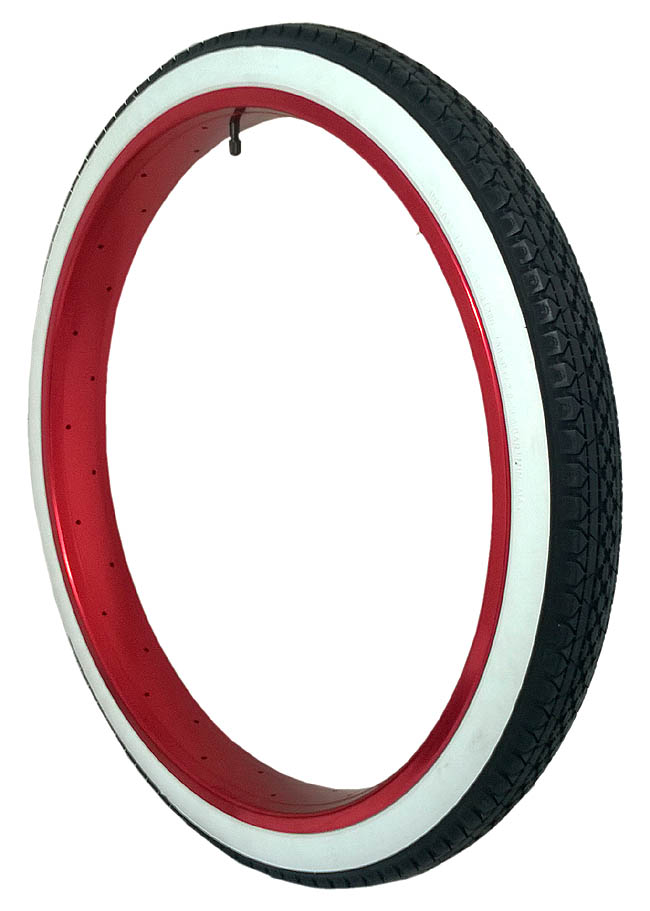 Keeping them clean is crucial. Many people wonder what the best method is for cleaning whitewall tires and how to keep them shiny white. So, here are three ways to keep your whitewalls looking amazing.
Keeping them clean is crucial. Many people wonder what the best method is for cleaning whitewall tires and how to keep them shiny white. So, here are three ways to keep your whitewalls looking amazing.
We wanted to try the bestselling products available and see exactly how good they were. Our patient was an abandoned white wall slick, left out in the elements for several years.
We decided to try these two products. Wide White Whitewall Cleaner from Coker Tire seemed interesting. As we had read a lot of good reviews about it, and it also came highly recommended by TV personality and motor aficionado Jay Leno. The other product, Detail King Tire White Wall Cleaning & Dressing Car Care Value Kit a top seller as well was extra enticing as it came as a kit, including a tire dressing.
Both products transformed the tired old tire to a shiny black delight again. It was a very easy process, and didn’t take more than 15 minutes total to make it look this great.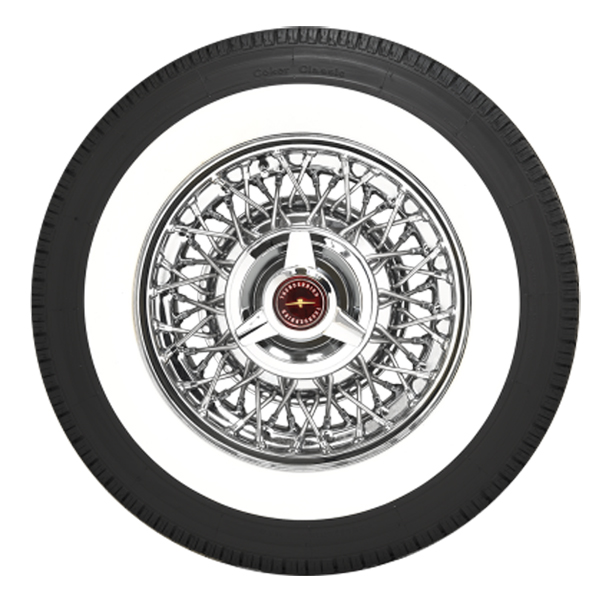
The Detail King Super Blue - Tire Dressing & Tire Shine Spray was a pleasant surprise. Not only does it make the tire retrieve that wet, brand new tire look, but it also protects the tire and white wall to the elements. Thus making it easier to keep your tires pristine. Click here to check price and availability on Amazon.com.
Beware of the brush. Don’t ruin your kitchen sponges and brushes while cleaning your car tires. Here is a great brush to take care of that. So cheap it doesn’t make any sense to ruin your house products anymore. Click here to grab one from Amazon.com.
Liquid happiness to help you out. Sometimes those dirty old white walls just won’t get white again after years of wear and tear in the elements. This product will help out tremendously. This fast-acting formula will remove the grime on contact. No excuse to roll around with dirty white walls anymore. Click here to check price and availability on Amazon.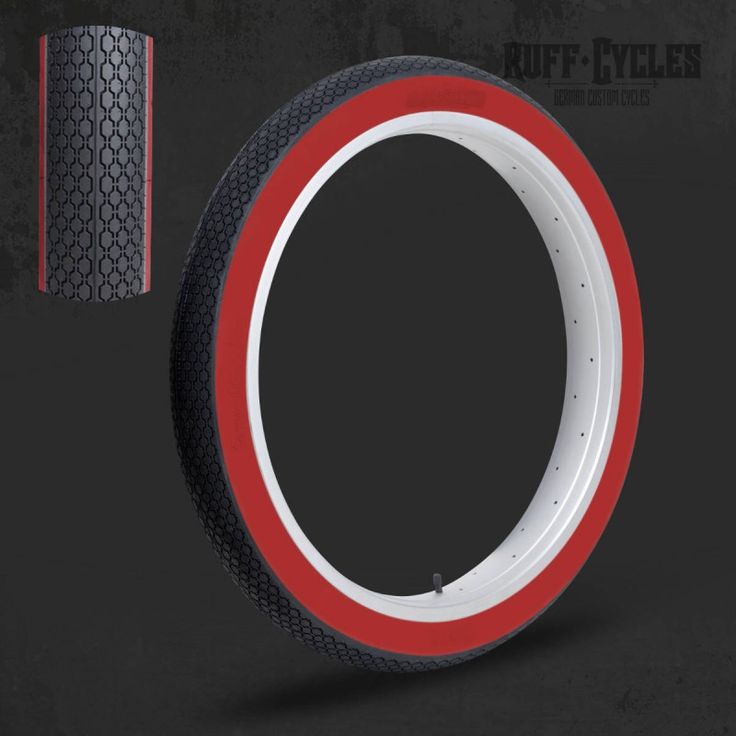 com.
com.
It’s one thing to keep the outside of your car clean, but if you have a nice car you definitely want to maintain the good looks. Both inside and out. There is no need to run around like a chicken with its head cut off looking for a bunch of products from a variety of stores anymore. This product makes maintenance so smooth and easy. All in one. A huge plus is the fact that you can easily bring it with you to car shows and exhibitions. You’ll always be on top of your game with these brushes, sponges, and towels. Hard to beat the price. Check price and availability on Amazon.com.
Guides, Reviews & Recommendations
After purchasing your great-looking whitewall tires, you definitely need to maintain their good looks. Because let’s face it, the biggest downside with a set of whitewall tires is keeping them clean. Your whitewall tires should be cleaned and cared for, just as much as the rest of your car if not more. The big whitewall has a tough life and is in direct contact with the elements and residue from road work as well as dust from your own brakes.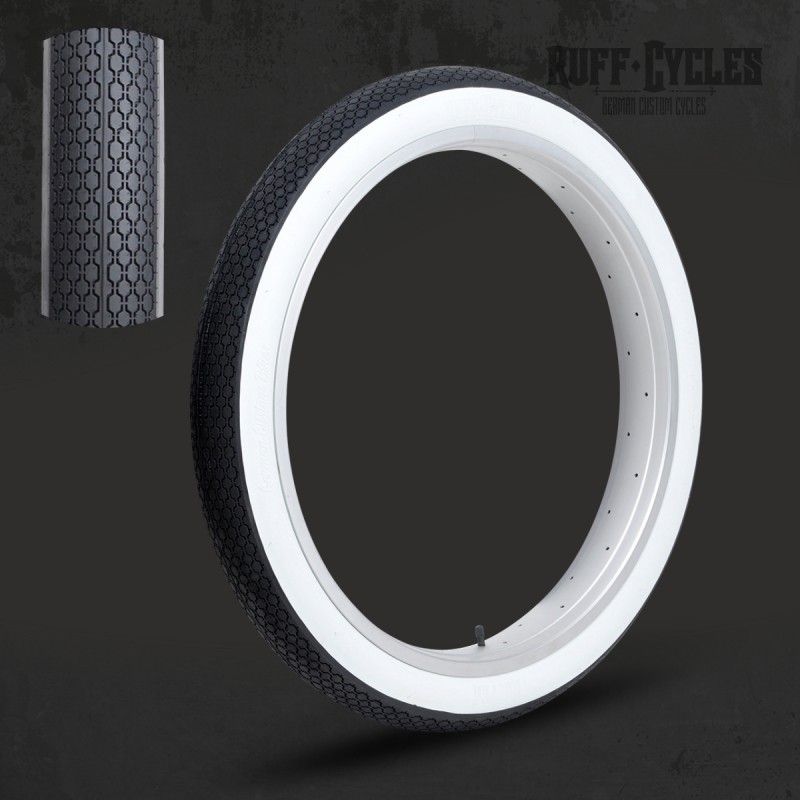 They have a tendency to turn yellow and brown from just being out in the elements. Keeping them clean is crucial. Many people wonder what the best method is for cleaning whitewall tires and how to keep them shiny white. So, here are three ways to keep your whitewalls looking amazing.
They have a tendency to turn yellow and brown from just being out in the elements. Keeping them clean is crucial. Many people wonder what the best method is for cleaning whitewall tires and how to keep them shiny white. So, here are three ways to keep your whitewalls looking amazing.
1. Frequent and routine cleaning is always your best bet. It can be done with the use of an eraser cleaning pad. There are also several dressings on the market to keep the whitewalls shiny and have a protective coat. This is always great to use after the whitewall has been cleaned. One great dressing to use is this one from Detail King.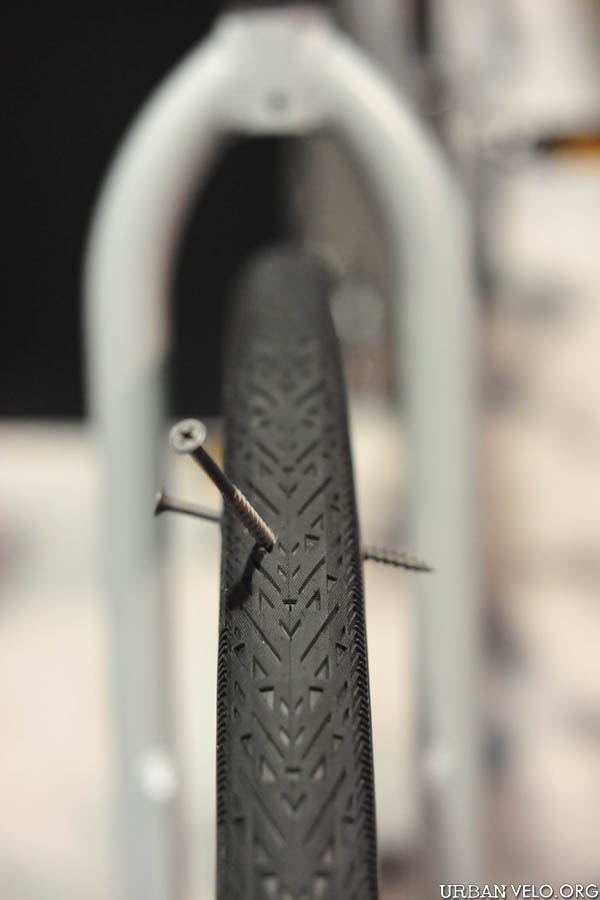
2. When your whitewalls are dirty and need a good cleaning. Always start with a quality cleaner such as this Wide White Whitewall Cleaner from Coker Tire, designed specifically for whitewalls. Don’t try to use a harsh household cleaning product or bleach. They will dry out your whitewall. Spray the entire whitewall with your cleaner, as it will break down dust and road grime. Let sit for a while before gently scrubbing with a brush if necessary. Rinse thoroughly and allow the tire to dry.
3. If the white wall is really stubborn, yellow, or brown. You may have to use a scrub pad, or in some cases even fine-grit sandpaper to gently remove the undesired layer, until the white layer shows through. After getting them clean again, don’t forget to apply the dressing.
We naturally had to try these products ourselves, and the patient this time was a sad old whitewall slick that has been left outside for many years. There were no cracks on the whitewall, but many scuff marks and it was noticeable yellow.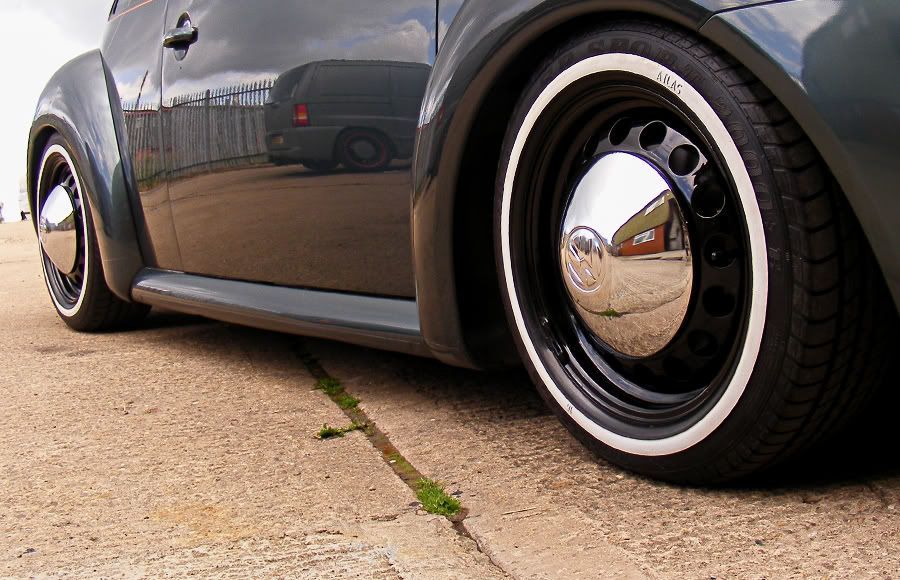
Half of the tire was cleaned with Cokers Wide White Whitewall Cleaner. We sprayed the wet tire with the product and let it sit for 5 minutes. There was no immediate reaction to the grime and dust. After 5 minutes we gently scrubbed the whitewall before rinsing it off. There were still visible scuff marks and shades of yellow.
The other half of the tire was cleaned with the Detail King Tire White Wall Cleaning & Dressing Car Care Value Kit. Only 30 seconds after applying the cleaner, the dirt literally started pouring right off the tire. We gently swiped over the whitewall before rinsing off the tire. After that, we also used the tire dressing included in the package on the whole tire. Our conclusion is that Detail King was far superior to the other product. No one was bad, but the Detail King Tire White Wall Cleaning & Dressing Car Care Value Kit was outstanding. The tire dressing gave the tire a wet look and the end result was very pleasing.
Pay attention to them. Rinse them off if they get dirty, wipe them down if you see a spot. Make sure the tires are cool to the touch and then give them a pre-rinse with clean water. Spray the whitewall with your cleaner. It helps break down tough brake dust & road grime while whitening even the dullest whitewalls. Be aware of where and how you park. Scratching the white walls against a curb is not what you want to do.
Rinse them off if they get dirty, wipe them down if you see a spot. Make sure the tires are cool to the touch and then give them a pre-rinse with clean water. Spray the whitewall with your cleaner. It helps break down tough brake dust & road grime while whitening even the dullest whitewalls. Be aware of where and how you park. Scratching the white walls against a curb is not what you want to do.
Always start with a quality cleaner such as the ones in this article, designed specifically for whitewalls. Don't try to use a harsh household cleaning product or bleach. They will dry out your whitewall and ruin them. (Remember, whitewall tires are expensive, and cleaning them is a lot cheaper). Spray the entire whitewall with your cleaner, as it will break down dust and road grime. Let it sit for a while before rinsing off the entire wheel.
They usually turn yellow due to age, UV damage, heat, road grime or oils from the black rubber leaching through to the surface of the whitewall.
We listed our own favorites in this article, after doing some thorough research. There are a plethora of products, and everyone has their own favorite method. Even baking soda mixed with water has a good cleaning effect. Do you have a favorite cleaner or product? Please get in touch with us as we're always looking for new and better products to use.
Kustomrama is an encyclopedia dedicated to preserve, share and protect traditional hot rod and custom car history from all over the world.
Please get in touch with us at mail@kustomrama.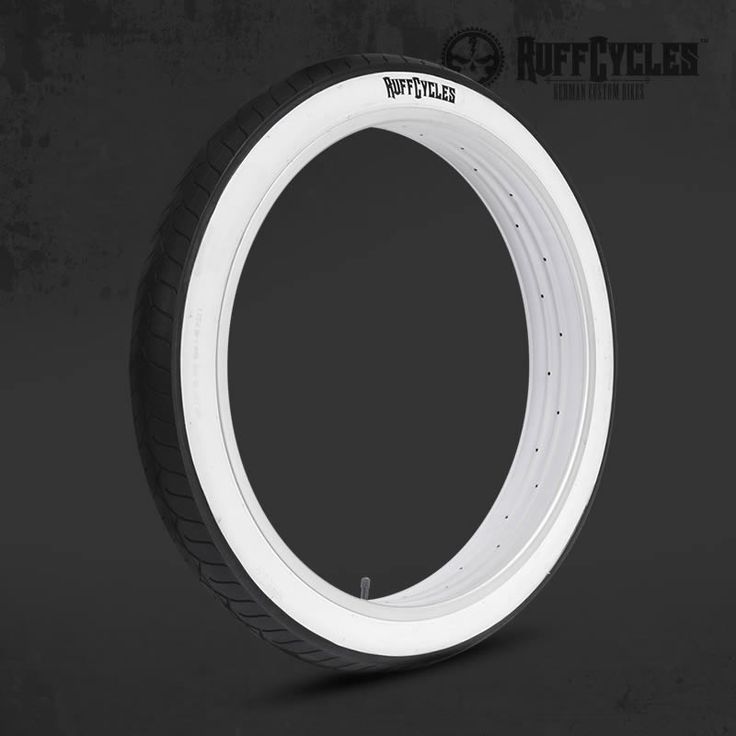 com if you have additional information or photos to share about How to clean and maintain whitewall tires.
com if you have additional information or photos to share about How to clean and maintain whitewall tires.
SunTec Auto Glass - Auto Glass Services on Vintage and Classic Cars
Finding a replacement windshield, back or side glass can be a difficult task when restoring your vintage or custom classic car. It doesn't have to be though now with auto glass specialist companies like www.suntecautoglass.com. They can source OEM or OEM-equivalent glass for older makes/models; which will ensure a proper fit every time. Check them out for more details!
Do you want to see your company here? Click here for more info about how you can advertise your business on Kustomrama.
Yellow and red marks on the tires.
What do they mean:
1. Multi-colored dots, triangles, which are applied to the sidewalls of car tires?
2. Colored stripes on their tread?
Colored stripes on their tread?
The answer to this curious question is quite simple. Circles (dots, triangles) of red, yellow (there are also blue or even white designations) are nothing more than balancing marks and they are intended to ensure the most accurate balancing of an automobile wheel.
1. Yellow dot or yellow triangle.
This yellow dot (or yellow triangle), which is applied to the sidewall of a car tire - is the lightest part of the tire , which is determined by the static balancing method.
If the rim has a distinguishable mark "L" - this is the lightest place on the rim, in this case, when mounting, it is necessary to place the lightest place on the rim ("L") on the opposite side of the light spot on the car tire, i.e. the yellow dot.
Note:
1. "L" is the lightest spot on the rim.
2.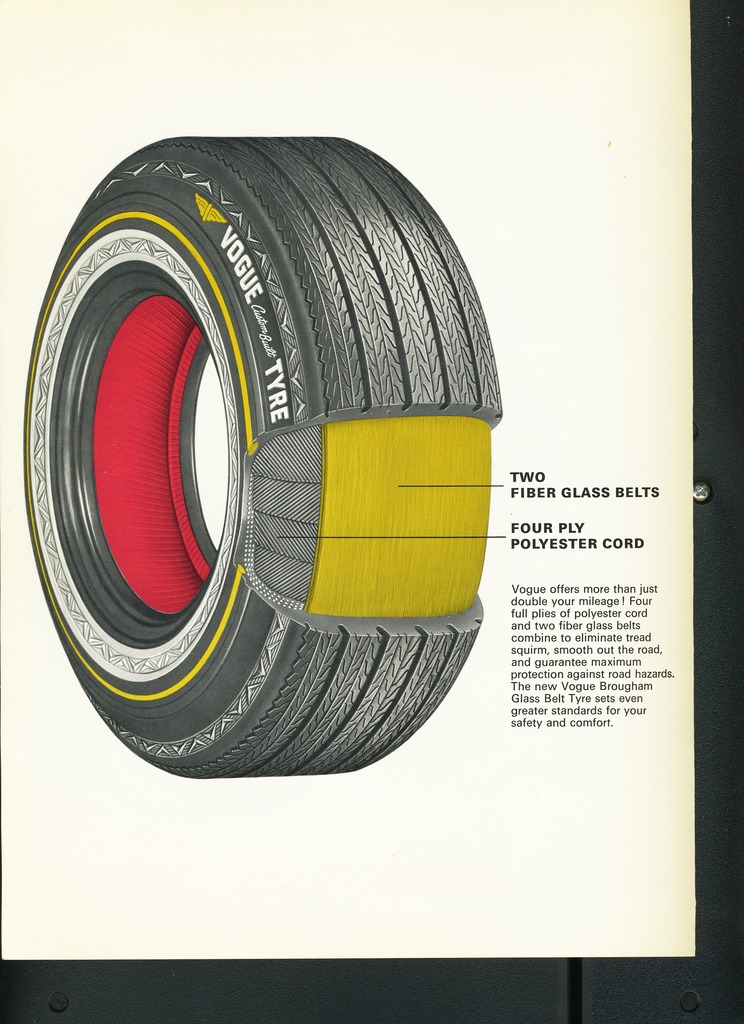 On rims of different manufacturing companies, the "L" point can be indicated by different colored dots: green, blue, as well as other colors.
On rims of different manufacturing companies, the "L" point can be indicated by different colored dots: green, blue, as well as other colors.
If there is no distinguishable “L” marking or colored dots on the rim, then in this case, during installation, it is necessary to combine the heaviest place on the rim, and this will be the place where the inflation valve is located with the lightest place on the car tire, then there is a yellow dot.
2. Red dot or red triangle.
This designation indicates the maximum radial force deflection (RFV) point, and is therefore the most rigid and therefore heaviest part of the sidewall of an automobile tire. This point, when mounting the wheel, must necessarily be aligned with the “L” mark - this is the lightest place on the rim
. The red dot (triangle), as a rule, is applied to car tires that are supplied in the original (primary) vehicle configuration. Its purpose is the greatest power inhomogeneity. In other words, this is a kind of heterogeneity, the occurrence of which can be closely related to various kinds of compounds of various layers of a car tire (belt layers, carcass layer, and so on).
Its purpose is the greatest power inhomogeneity. In other words, this is a kind of heterogeneity, the occurrence of which can be closely related to various kinds of compounds of various layers of a car tire (belt layers, carcass layer, and so on).
The rims that are supplied in the original, original equipment of the car are also marked with the minimum distance from the center of the rim to the rim (a white dot or another mark is applied). During the assembly of the car wheel at the car factory, the red dot of the tire is aligned with this mark on the wheel rim. This is done in order to reduce the maximum power inhomogeneity, to ensure a balanced power characteristic of the wheel assembly.
During normal wheel mounting, experts are advised not to pay attention to the presence of a red dot, but to be guided only by the yellow dot while aligning it with the inflation valve.
3. White dot or white circle.
In the case of some OE car tires, this color coding tells us the point of minimum radial force deflection (RFV), which is the most flexible part of the car tire sidewall wall.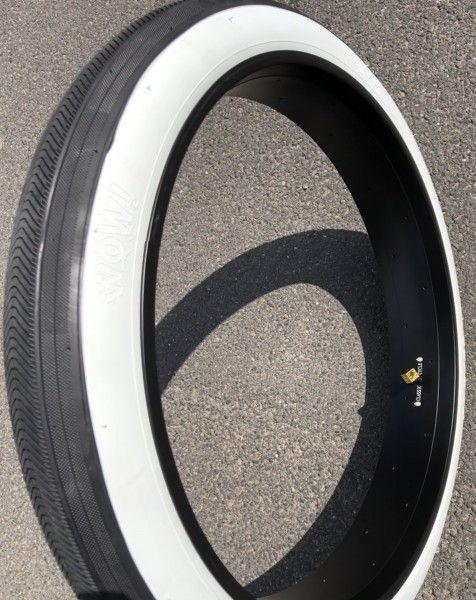 In this case, the white dot or circle must be aligned 180° from the 'L' mark, or the 'top' mark on the wheel.
In this case, the white dot or circle must be aligned 180° from the 'L' mark, or the 'top' mark on the wheel.
4. Colorful lines.
Multi-colored lines that are printed on car tire treads are necessary to distinguish these tires that are in a pile, for example, in a store or in a warehouse.
Each tire size has its own unique color, arrangement and thickness of these colored stripes. The stripes can sometimes vary depending on the state of the manufacturing company, the specification and release date of car tires, and even on tires that have the same tread pattern and size.
According to foreign experts: colored lines serve as an indicator on the tire, which shows that this tire has been run in.
5. White stamp with a number on a car tire.
A white stamp with a number on a car tire indicates the number of the inspector who carried out the final inspection of the car tire at the factory.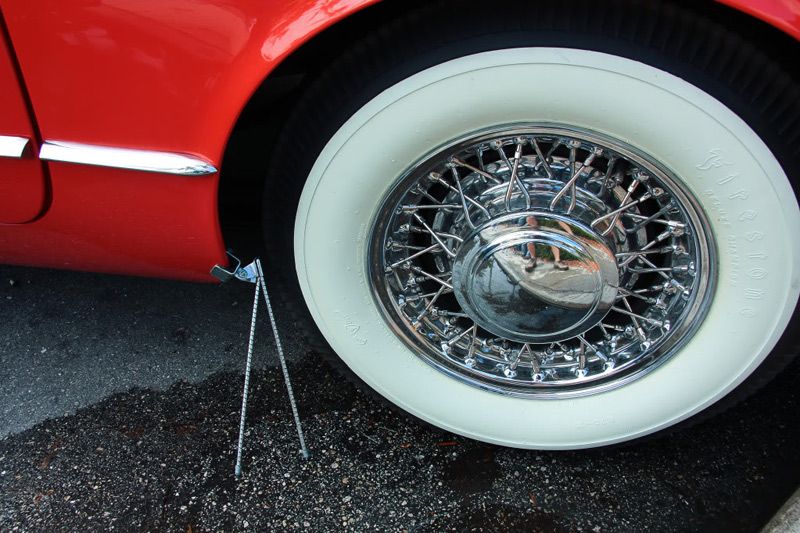 In addition, this digital marking does not carry any information load.
In addition, this digital marking does not carry any information load.
Car owners who purchase car tires in retail stores are advised to first of all pay attention to the corresponding inscriptions that are present on the sidewall of the wheel tire: size, speed symbol, load index, country of the manufacturer, tread pattern, specification, etc. Further. Colored stripes on car tire treads carry only internal factory values and should not be taken into account by ordinary buyers in any way.
DOT indicates that the tire meets all safety standards set by the US Department of Transportation (DOT). Next to this inscription should be the identification or serial number of the tire, a combination of letters and numbers, no more than 12 characters.
UTQG - Uniform Tire Quality Grading System
Meets the standards of the Uniform Tire Quality Grading System, a quality control system developed by the US Department of Transportation (DOT).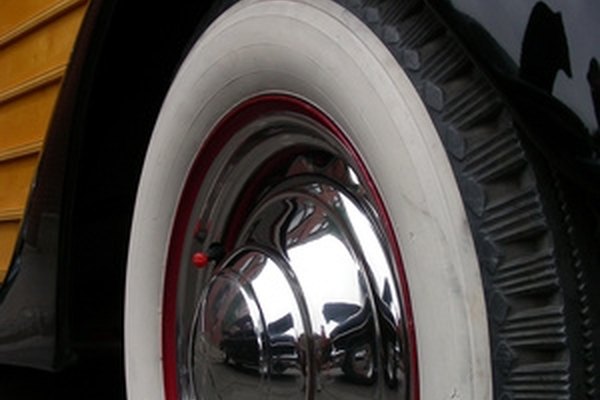
Dictionary of designations
BLK - black sidewall
BSW - (Black Side Wall) - black letters on the sidewall of the tire (in the designation of the tire brand).
DSST - Dunlop Self-Supporting Technology)
FR - (Flange Rotector) - tire with rim protection.
LT - (Light Truck) - tire for light truck
MFS - (Maximum Flange Sheild) Maximum Bead Protection System protects expensive wheels from damage on curbs and sidewalks - rubber profile around the circumference of the tire, located on the bottom of the wall above the flange rim, forms a buffer zone.
SCT from Goodyear - a special noise-vibration absorbing layer inside the tire. An analogue of ContiSilent from Continental or Michelin Acoustic.
ContiSeal™ is a patented technology from the German company Continental that reduces the effects of tire tread damage: punctures up to 5 mm in diameter caused by nails and other sharp objects. Apply to the inner surface of the tire.
ORBL - (OUTLINED RAISED BLACK LETTERS)
OWL - (Outline White Letters) - contour white letters on the tire sidewall.
RF - (Reinforced = XL) reinforced - for tires with increased load capacity.
RFT - Runflat Tires
RPB - Rim Protection Bar
RRBL - RECESSED RAISED BLACK LETTERS
RunFlat - a technology that allows your car to continue moving after a puncture or flat tire. Even if the tire pressure is completely lost, this technology allows the car to travel at least 80 km more, at speeds up to 80 km/h. Reinforced tires, as a rule, have several layers of rubber with a heat-resistant cord in the side parts, which, with a complete loss of pressure, do not allow the sidewalls of the tire to fold or wrinkle.
RunOnFlat - RunOnFlat tires, formerly known by the acronym EMT, allow you to continue driving with partial or complete loss of pressure.
RWL - white letters on the sidewall of the tire
SSR - Run Flat (Self-Supporting Runflat Tire) - developed by Continental.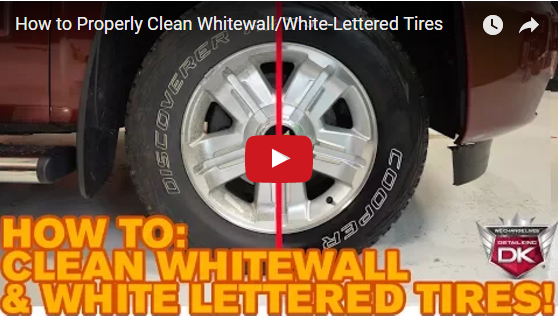 The tire has a special rubber reinforcement in the side wall, which takes on the weight of the car in the event of a loss of pressure.
The tire has a special rubber reinforcement in the side wall, which takes on the weight of the car in the event of a loss of pressure.
VSB - (VERTICAL SERRATED BAND)
WSW - white sidewall
XL - (Extra Load) - reinforced tire
ZP - Zero Pressure is a technology that allows you to continue driving in the event of a loss of tire pressure. , RO2 - Designation for Audi Genuine Equipment
AOE= Audi Genuine Equipment with runflat technology
N0, N1, N2, N3 - Tire designed for Porsche
HO - Tire designed for Honda vehicles
J - tire designed for Jaguar models
MO, MOE, ML, MO-S - tire designed for Mersedes
* - tire designed for BMW
VOL - tire designed for Volvo
LR - tire designed for Land Rover
AR - Alfa Romeo original equipment
MI - tire designed for Mitsubishi
AML - Aston Martin specification
T0 - tire designed for Tesla
V0 - Volkswagen
J, J1, JRS - Jaguar
MGT - Maseratti
ND0, Na0 means that the tire is homolog for cars Porsche (+VW Touareg)
NF0 means that the tire is homologous to the Porsche
- homologation on the Huyndai Genes has disc rim protection (Michelin) DT1 (Michelin) tires with this marking must be installed on the same axle, they are distinguished by a modified tread pattern.